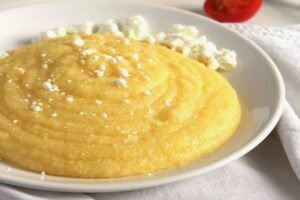Roughly eight million Ukrainians have fled their country since the start of the conflict with Russia. Almost a million of those have ended up in next-door Moldova.
And since the residents are known for being hospitable people who grow their own produce, at least those who arrive in the country are getting a warm welcome!
Traditional Moldovan cuisine is a blend of influences from neighbouring countries: a mix of hearty, filling dishes. The fare is generally simple and wholesome: locally-grown vegetables and grains loom large on the menu, with the country’s most iconic dish, mămăligă, being a nice mix of the two.

Obviously, it’s not all vegetarian fare. Meat dishes are common in Moldovan cuisine, with pork being a popular choice. Mititei are small grilled meatballs made from minced pork or beef; placinte (a ubiquitous snack food) are savoury pastries filled with meat, cheese, or vegetables; and sarmale are stuffed cabbage rolls filled with minced meat, rice, and vegetables.
As you’d expect in a country where temperatures can fall to -10C, the menu also includes a wealth of stews and soups. Borscht, a beetroot-based sour soup that’s popular across the region, is served nationwide. Zeama is a rich chicken and sour cream broth that’s packed with anything from onions to carrots, celery, mushrooms, garlic, or potatoes and garnished with lemon and herbs. And tocana, a stew that’s a favourite at family gatherings, consists of seared pork added to a pot of onion, garlic, bell pepper and tomatoes.
Moldova is also known for its wines. But though commercial production is fairly big (Moldova is the 20th largest wine-producing country in the world), it’s the home-grown plonk that’s most prevalent: many families have their own vineyards, hand recipes down through the generations, and welcome visitors with a glass of home-made wine. Let’s hope the refugees are enjoying this well-deserved hospitality!







Click here to change your cookie preferences